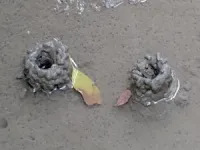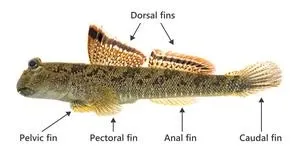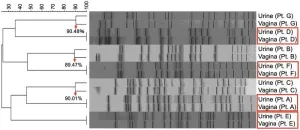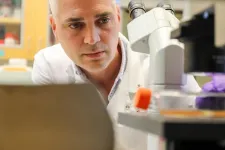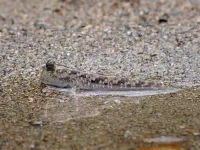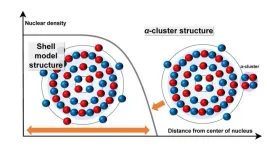(Press-News.org) A cutting-edge study revolutionizes coastal wetland mapping by integrating unmanned aerial systems with light detection and ranging (LiDAR) and multispectral sensors. This innovative approach provides detailed elevation data and vegetation analysis, enabling highly accurate classifications of diverse wetland types. The research advances conservation by offering a scalable, efficient, and cost-effective method that is instrumental in climate change mitigation strategies and informs policy-making for coastal resilience.
Coastal wetlands, situated at the junction of land and water, are vital ecosystems known for their high productivity. They play a key role in carbon sequestration, storm buffering, and providing habitats for diverse species. However, these critical areas are increasingly threatened by human activities and climate change. The dynamic nature and periodic flooding of wetlands pose significant challenges for traditional monitoring methods. Based on these issues, there is a pressing need for advanced remote sensing techniques to ensure effective conservation and management of these valuable ecosystems.
A team of researchers from Mississippi State University and the University of North Carolina Wilmington conducted a study (DOI: 10.34133/remotesensing.0169) published on July 4, 2024, in the Journal of Remote Sensing. The study focuses on the precision mapping of coastal wetlands using UASs equipped with light detection and ranging (LiDAR) and multispectral sensors. By surveying eight diverse wetland sites in North Carolina, the research aimed to enhance the accuracy and efficiency of wetland classification and mapping.
Using UASs equipped with LiDAR and multispectral sensors, the researchers collected high-resolution elevation data and detailed vegetation imagery across eight diverse wetland sites in North Carolina. Sophisticated machine learning algorithms enabled highly precise classifications of wetland types. Estuarine intertidal emergent wetlands exhibited the highest classification accuracy due to distinct vegetation structures and spectral signatures. Palustrine forested and scrub-shrub wetlands, with their dense and complex vegetation, presented more challenges. The integration of LiDAR and multispectral data proved scalable, efficient, and cost-effective for wetland mapping. This approach significantly advances conservation efforts and informs policy-making for coastal resilience, highlighting the transformative potential of combining advanced remote sensing technologies in environmental monitoring.
Dr. Narcisa Gabriela Pricope, the lead researcher, stated, "Our integrated approach using UAS-derived LiDAR and multispectral data significantly improves the accuracy of wetland mapping. This method not only enhances our understanding of these critical ecosystems but also supports the development of effective conservation strategies."
The innovative use of UASs for wetland mapping has far-reaching implications for conservation and policy-making. The precise data collected can inform strategies to protect coastal wetlands, mitigate climate change impacts, and enhance biodiversity. This research highlights the transformative potential of merging advanced remote sensing technologies in environmental monitoring, paving the way for sustainable management of natural habitats.
###
References
DOI
10.34133/remotesensing.0169
Original Source URL
https://doi.org/10.34133/remotesensing.0169
Funding information
This research was funded by the North Carolina Department of Transportation (NCDOT), contract number RP 2020–04, awarded to N.G.P. (lead principal investigator) and J.N.H. in the Department of Earth and Ocean Sciences at the University of North Carolina Wilmington.
About Journal of Remote Sensing
The Journal of Remote Sensing, an online-only Open Access journal published in association with AIR-CAS, promotes the theory, science, and technology of remote sensing, as well as interdisciplinary research within earth and information science.
END
Wetland wonders unfold: Aerial systems shed light on ecosystem services
2024-07-19
ELSE PRESS RELEASES FROM THIS DATE:
New discovery adds to story of ancient human migration
2024-07-19
New evidence of human occupation in southeast Indonesia dating back 42,000 years offers fresh clues on the route taken by some of the first humans to arrive in our region, according to a study from The Australian National University (ANU).
Lead author and ANU PhD candidate Hendri Kaharudin said the location of the discovery -- at Elivavan on Indonesia’s Tanimbar islands -- makes it especially significant.
“Tanimbar is located just off the ‘Sahul shelf’, which encompasses modern-day Australia, as well as New Guinea,” he said.
“The question ...
A tale of two “niches”: The microbial connection between urinary bladder and vagina
2024-07-19
The human body hosts a diverse array of microorganisms that maintain a delicate balance crucial for overall health. This microbial harmony can be disrupted by factors like infections, aging, and hormonal changes, leading to dysbiosis—a condition where microbial communities become imbalanced and harmful to health. Postmenopausal women, for instance, are particularly susceptible to recurrent urinary tract infections and inflammation, including cystitis, due to these microbial shifts.
Dr. Takanori Sekito from the Department of Urology, Okayama University Graduate School of Medicine, Japan explains, “In postmenopausal women, the vaginal flora changes ...
Chemists design novel method for generating sustainable fuel
2024-07-19
COLUMBUS, Ohio – Chemists have been working to synthesize high-value materials from waste molecules for years. Now, an international collaboration of scientists is exploring ways to use electricity to streamline the process.
In their study, recently published in Nature Catalysis, researchers demonstrated that carbon dioxide, a greenhouse gas, can be converted into a type of liquid fuel called methanol in a highly efficient manner.
This process happened by taking cobalt phthalocyanine (CoPc) molecules and spreading them evenly on carbon nanotubes, graphene-like tubes that have unique electrical properties. On their surface was an electrolyte ...
ETRI breathes digital life into cultural heritage
2024-07-19
South Korean researchers are revitalizing the nation's world-class cultural heritage through digital transformation. By collaborating with museums, they are bringing the rich history and culture of Korea to life using AI-based technology development.
Since 2020, the Electronics and Telecommunications Research Institute (ETRI) and the National Museum of Korea have been working together under a Ministry of Culture, Sports and Tourism R&D project to develop and demonstrate key technologies for the digital transformation of Korean cultural heritage.
The two institutions have been applying ...
These healthcare professionals may be secret weapon against hypertension, study says
2024-07-19
When it comes to helping patients with high blood pressure get their hypertension under control, a new Tulane University study finds that pharmacists and community health workers have the best success rates.
The study, published in Circulation: Cardiovascular Quality and Outcomes, analyzed data from 100 hypertension trials around the world and compared blood pressure reductions by the type of healthcare professionals who led the interventions.
While interventions led by nurses, physicians and multiple healthcare professionals still significantly reduced blood pressure for patients, pharmacists achieved the greatest improvements, followed ...
New humidity-driven membrane to remove carbon dioxide from the air
2024-07-19
Direct air capture was identified as one of the ‘Seven chemical separations to change the world’. This is because although carbon dioxide is the main contributor to climate change (we release ~40 billion tons into the atmosphere every year), separating carbon dioxide from air is very challenging due to its dilute concentration (~0.04%).
Prof Ian Metcalfe, Royal Academy of Engineering Chair in Emerging Technologies in the School of Engineering, Newcastle University, UK, and lead investigator states, “Dilute ...
Study shows promise for a universal influenza vaccine
2024-07-19
New research led by Oregon Health & Science University reveals a promising approach to developing a universal influenza vaccine — a so-called “one and done” vaccine that confers lifetime immunity against an evolving virus.
The study, published today in the journal Nature Communications, tested an OHSU-developed vaccine platform against the virus considered most likely to trigger the next pandemic.
Researchers reported the vaccine generated a robust immune response in nonhuman primates that were exposed ...
To walk, you only need fins (and maybe a sense of adventure)
2024-07-19
Okinawa’s mangrove forests are home to many animal species, from crabs to kingfishers; they host a diverse ecosystem teeming with life. Among the quirkier residents living there is “Minami-Tobihaze” — the barred mudskipper. “They are fish, but they can walk and live partly on land,” says Dr. Fabienne Ziadi-Künzli from the Nonlinear and Non-equilibrium Physics Unit, who is the first author of a study on mudskipper anatomy, which was recently published in the Journal of Anatomy.
Adapting to a new life
The barred mudskipper, scientifically called Periophthalmus argentilineatus, has more than just one oddity. Their eyes ...
Come closer: titanium-48’s nuclear structure changes when observed at varying distances
2024-07-19
The world around us is made up of particles invisible to the naked eye, but physicists continue to gain insights into this mysterious realm. Findings published in Physical Review C by Osaka Metropolitan University researchers show that the nuclear structure of an atom likely changes depending on the distance the protons and neutrons are from the center of the nucleus.
OMU graduate student Maito Okada, Associate Professor Wataru Horiuchi, and Professor Naoyuki Itagaki from the Graduate School of Science compared calculations using theoretical models with existing experimental data to determine whether titanium-48, the most common isotope of titanium with 22 protons and 26 neutrons, ...
Good timing: UNLV study unravels how our brains track time
2024-07-19
Ever hear the old adage that time flies when you’re having fun? A new study by a team of UNLV researchers suggests that there’s a lot of truth to the trope.
Many people think of their brains as being intrinsically synced to the man-made clocks on their electronic devices, counting time in very specific, minute-by-minute increments. But the study, published this month in the latest issue of the peer-reviewed Cell Press journal Current Biology, showed that our brains don’t work that way.
By analyzing changes in brain activity patterns, the research team ...

